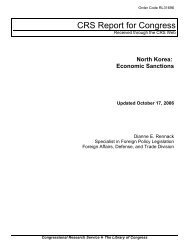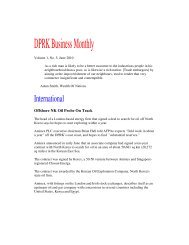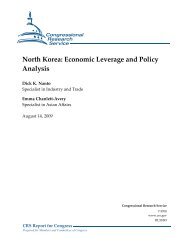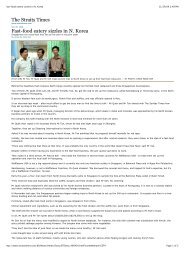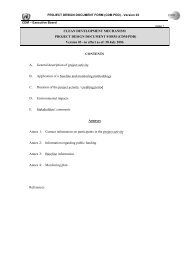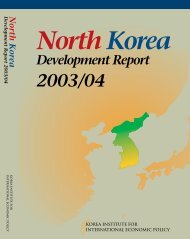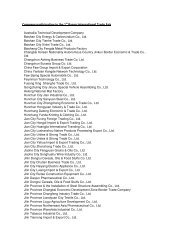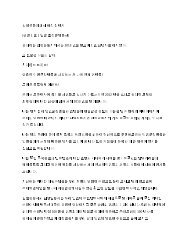North Korean Policy Elites - Defense Technical Information Center
North Korean Policy Elites - Defense Technical Information Center
North Korean Policy Elites - Defense Technical Information Center
Create successful ePaper yourself
Turn your PDF publications into a flip-book with our unique Google optimized e-Paper software.
To write accurately about <strong>North</strong> Korea is a daunting challenge, given the secretive nature<br />
of the country. Often even a single question, such as the key question of how <strong>North</strong> Korea’s<br />
leader, Kim Jong-il, makes decisions, cannot be answered satisfactorily. Fortunately, our<br />
knowledge of <strong>North</strong> Korea has improved markedly in recent years, thanks in part to the attention<br />
devoted in the United States to dealing with <strong>North</strong> Korea’s nuclear program, and thanks as well<br />
to expanded inter-<strong>Korean</strong> dialogue since former president Kim Dae-jung introduced his<br />
“sunshine” engagement policy in 1998.<br />
Understanding <strong>North</strong> Korea is difficult not only because of its secretive nature, but also<br />
because it is so very different in culture and politics from Western capitalist societies. How best<br />
to characterize <strong>North</strong> Korea remains a matter of debate, but it is fair to say that <strong>North</strong> <strong>Korean</strong><br />
society exhibits characteristics of a traditional dynastic Confucian society, with an overlay of<br />
Stalinism. <strong>North</strong> Korea’s distinctive characteristic is that the Kim family, father and son (as well<br />
as assorted family members), have ruled in this Confucian-Stalinist tradition for over half a<br />
century, running the country somewhat like the autocratic founder of a private corporation that<br />
operates without transparency or accountability.<br />
The <strong>North</strong> <strong>Korean</strong> <strong>Elites</strong> project was sponsored by the Office of the Under Secretary of<br />
<strong>Defense</strong> for <strong>Policy</strong> for the purpose of developing a better understanding of <strong>North</strong> Korea’s policy<br />
elites and how they might respond to communications, media, and other signals from abroad.<br />
Such an understanding is critical for both routine relations and for crisis management, where<br />
there is a high potential for overtures and actions to be misinterpreted or confused. Under the<br />
direction of project leader Kongdan Oh Hassig, USD(P) commissioned five American<br />
researchers to write on the topics set forth in the Terms of Reference provided in Appendix A.<br />
Brief biographies of the authors may be found in Appendix B. Asian Views of <strong>North</strong> Korea: A<br />
Field Trip Report, is found in Appendix C.<br />
Three core questions guided the research: “What are the factions and potential factions<br />
that exist within the <strong>North</strong> <strong>Korean</strong> leadership?” “What information sources and channels do<br />
each of these individuals and factions depend on?” “What are the contextual factors that could<br />
affect how <strong>North</strong> <strong>Korean</strong> elites receive, assimilate, and interpret information from outside<br />
sources?”<br />
ES-1



